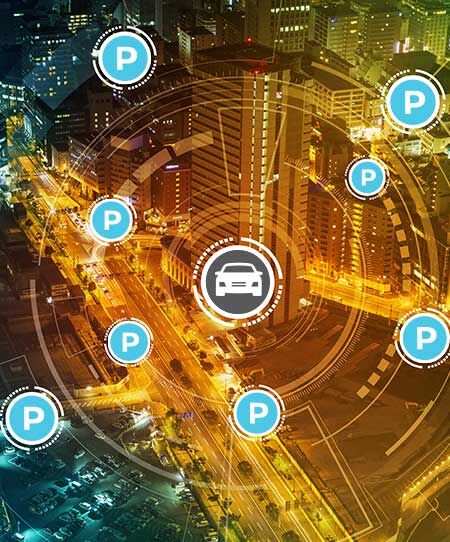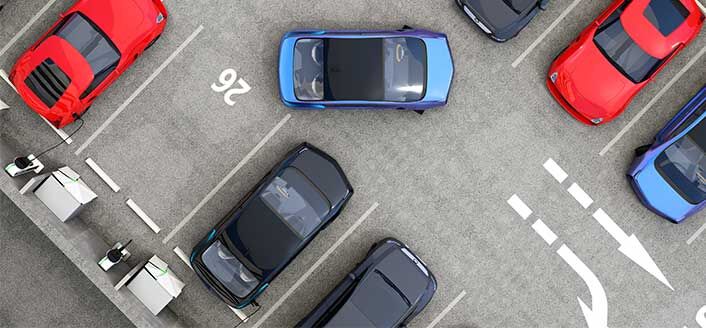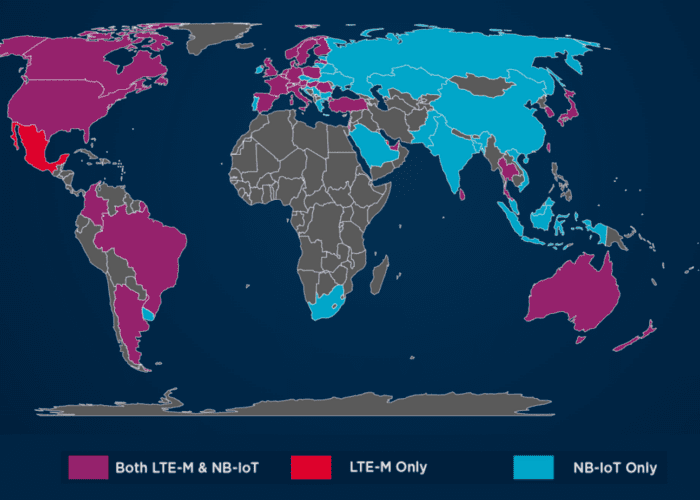USA Today writes that the average American spends 17 hours searching for parking spaces each year, amounting to $345 per driver in wasted time, fuel, and emissions. With the help of the Internet of Things (IoT), this waste can be reduced. Imagine a parking lot linked to the cloud that regularly reports each time a spot became available. While it may sound like a relatively simple IoT application, this one piece of information saves drivers valuable time, eases driver confusion, and streamlines the entire parking process.
To accomplish the dream of pain-free parking, parking lot and garage management companies around the world are connecting their locations to low power wide area (LPWA) networks. LPWA networks are the simplest and cheapest connection option for IoT networking. Because they rely on low-power signals, the batteries that power LPWA networks can last for years at a time while the networks themselves are rugged enough for varied outdoor applications. GSMA writes that in San Francisco, an LPWA network connects more than 19,250 parking spaces, which reduces the time spent hunting for parking by 43%. This, in turn, has increased annual parking revenue by $1.9 million.
How Does LPWA for Parking Lots Work?
Low power wide area networks span large distances but typically send only a few kilobytes of data per second, handling very simple yes/no inquiries. To effectively monitor the status of a given spot, lot owners need only install an inexpensive electromagnetic sensor on the surface of that spot. The sensor will report each vacancy space within the lot back to the cloud, allowing lot managers to make decisions from there. Other monitoring options include traditional motion sensors or pressure sensors. While pressure sensors must make contact with the wheel of a vehicle, motion sensors may be affixed to a curb stop or pole in front of each parking spot. Ultimately, there are many ways to set up the sensor, but the best solution will depend on your goals, location, and setup. For monitoring purposes, LPWA networks are compatible with everything from simplistic raspberry pi setups to complex, cloud-based data analysis software.
Useful to parking lot managers, garage owners, meter companies, or civil parking authorities alike, LPWA technology is perfect for urban use as its signal is strong enough to work even in concrete-dense, crowded cityscapes. Whether lot management wants to establish a navigation app for users or simply gain better control of lot pricing at peak hours by knowing when demand will be highest, LPWA networks are a great way to keep track of complex parking processes.
Potential Applications
While the applications for LPWA monitored parking are limitless, college campuses, stadiums, shopping centers, and cities may particularly benefit. Stadiums, for instance, may spend thousands on parking lot crews each year and still struggle to manage parking lot panic amongst anxious visitors eager to get to a concert or sport event. Stadium lots often are spread out, with spots closest to the stadium filling immediately. With added monitoring, lot attendants may assign a spot upon entry or even speed up valet service.
Colleges may employ similar tactics for students struggling to get to class on time. In addition to monitoring timed spots for violations and ensuring equitable access to prime parking spots, colleges also can employ parking monitors to better manage high traffic at special events, sporting events, and at the beginning and end of semesters. Colleges may want to link parking information to a public webpage or phone application to let students look for available spots upon arrival.
For large centers, like malls or outlet shopping centers, LPWA-enabled parking sensors may even prove helpful in boosting handicap parking accessibility. While tagging non-handicapped designated spots may give casual shoppers a better chance at parking, ensuring that handicapped accessible parking is tagged as well can mean the difference between a safe and comfortable shopping experience for a disabled visitor and a stressful and painful experience not soon to be repeated. Handicap-friendly parking can be difficult even at the best of times as spots fill fast and stay filled. At locations like malls, these spots also tend to be spread out. Through access to a simple app-based map, disabled visitors will find parking faster and be able to make an informed decision about back-up parking spots not designated for exclusive use by handicapped individuals.
Even cities may make good use of monitoring technologies by linking parking lots and metered locations across dense urban districts, allowing tourists and residents alike to easily determine which local lots are full and which garages may have available space. Sensors may be linked directly to digital signage also linked in with the LPWA network. Signs then can display how many spots are left in a given lot so that drivers may move on to a different area if a lot or garage is full.
Getting the Most from Your Parking Lot: The Aeris LPWA Solution
Whether you own a network of parking lots downtown, a hospital parking garage, or manage a citys street parking, Aeris can help you plan and set up your parking systems LPWA network and suggest appropriate technologies to get you up and running. We will work closely with your IT team to ensure data optimization and offer customizable solutions durable enough for any parking environment.
Contact us today to take the headache out of parking management and to learn more about what LPWA networks can do for you.




